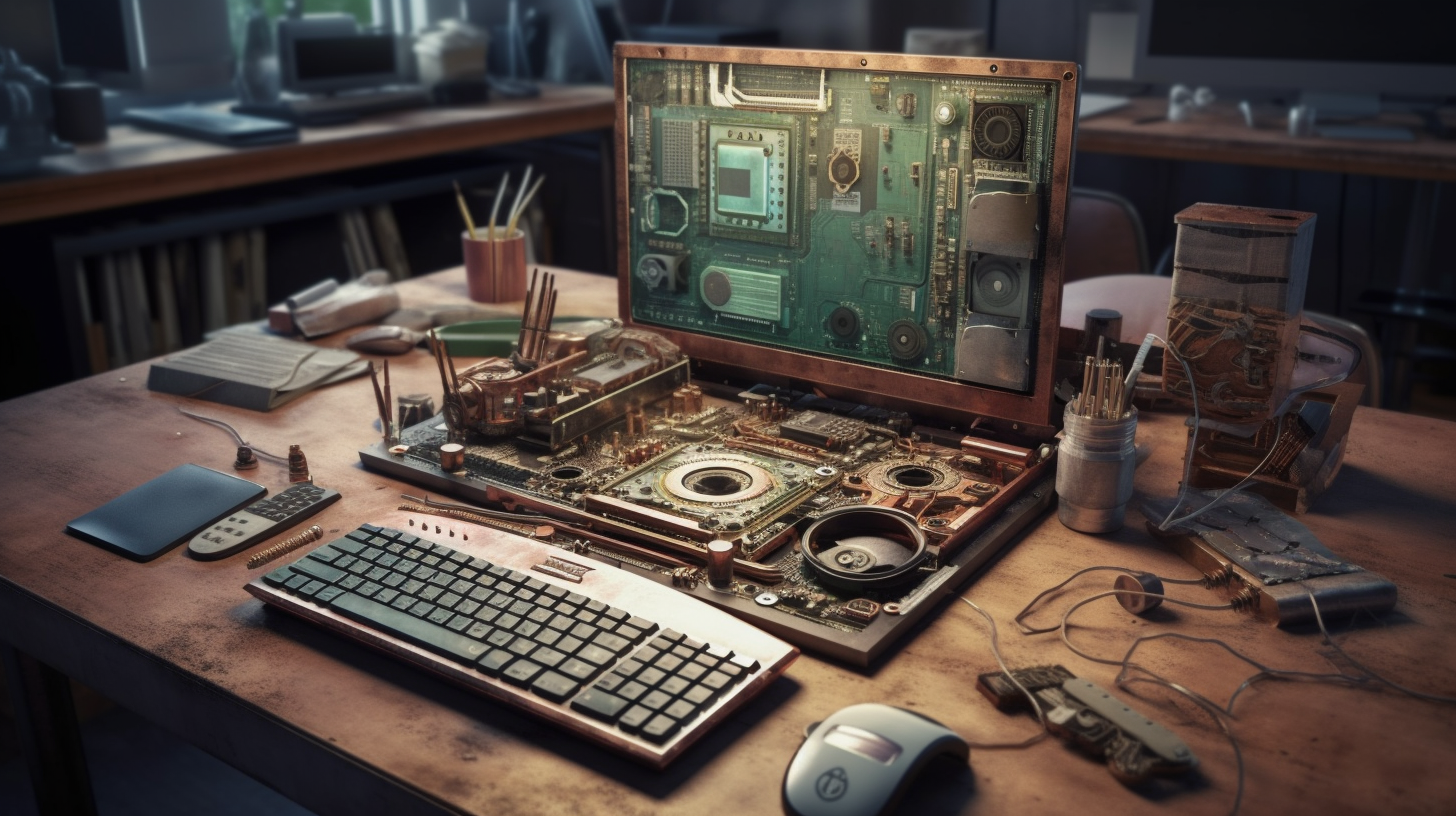Keep Calm and Configure Your Laptop: A Beginner’s Guide to CompTIA A+ Core 1 Exam Section

In our brave new world, where technology evolves with breakneck speed and computer literacy has become as crucial as reading or writing, gaining a well-rounded understanding of laptop hardware and component installation has never been more relevant. But, let's get straight to the point here! It can be as daunting as being handed a crocodile when you were expecting a kitten. The tech-jargon can feel like decoding hieroglyphics, the components seem as intricate as clockwork, and the pitfalls of going wrong are precarious. Welcome, dear reader, to the maddening yet fascinating realm of laptop hardware configuration. If your aim is to conquer the "Given a scenario, install and configure laptop hardware and components" section of the CompTIA A+ Core 1 (220-1101) exam, then you've hit the bull's-eye with this guide.
Getting into the Groove
First thing's first! You can't run before you can walk. In laptop-speak, that means understanding your hardware and components. Every laptop is a symphony of different parts singing together in harmony. There's your Central Processing Unit (CPU) acting as the maestro, your hard drives storing the orchestra's sheet music, your RAM providing the tempo, and so on. Each component is integral to the smooth functioning of your device. But don't stress yourself out. We'll break each piece down to size. Persist because we're just kicking off.
Installing Hardware, A Step-by-Step Dance
Now that we've assembled our team, let's rock and roll! Excuse the playful wordplay. Installing hardware can feel like a choreographed dance. Follow each step in order to sidestep a mess. So, without further ado, let's plunge right into the action!
You'll start by focusing on the RAM. Remember, this is the heart of your laptop's performance. But here’s a fun fact, messing up with RAM installations is almost like National Sport in the world of laptop configuration. Everyone's botched it. Everyone's cringed about it. And each person has a tale to narrate. So, keep in mind, should you stumble, chuckle it off since it's all part and parcel of the learning journey. Trust me, you're neither the first nor will you be the last one to stumble.
The Nitty-Gritty of Component Configuration
Up next is the science and sometimes art of component configuration. This process involves setting your hardware components so they can communicate and work effectively together. It's like organizing a committee where each member has a specific role and agenda. No need to be as nervous as a cat in a room full of rocking chairs, though! With time, patience, and practice, you’ll be a pro. Remember, Rome wasn't built in a day!
Fair warning! The further you delve into this, the more you might feel like you've stepped onto a never-ending roller coaster ride. There will be high points, like when your laptop boots up without complaining after a hardware swap (score!). There will be low points, like when your laptop screen goes blank, and you've got no clue why (groan!). But keep your chin up, dear reader. Every problem is but a puzzle waiting to be cracked. A kernel of truth in a sea of code, if you will.
Learning to Swim: Troubleshooting and Beyond
Finally, we step into the land of troubleshooting. Here, we put your knowledge and skills to the real world test. Troubleshooting feels akin to taking swimming lessons in turbulent waters. One moment you're sailing smoothly, the next, you're struggling to stay afloat. But hey, did I mention not to sweat the small stuff? It’s part of the journey. Like a phoenix rising from the ashes, you'll come out on top, having learned and grown from the experience.
In conclusion, remember to take each step at a time. You're not racing against Usain Bolt here. Patience and persistence are your best friends in this game. Good luck with your exam prep! Here's hoping that the "Given a scenario, install and configure laptop hardware and components" section of the CompTIA A+ Core 1 (220-1101) exam becomes as easy as pie for you. Oops, I seem to have stirred up some trouble! Explaining why we say 'easy as pie' even though making a pie is challenging is a different ball game altogether, and honestly, a topic better suited for another day, pal!